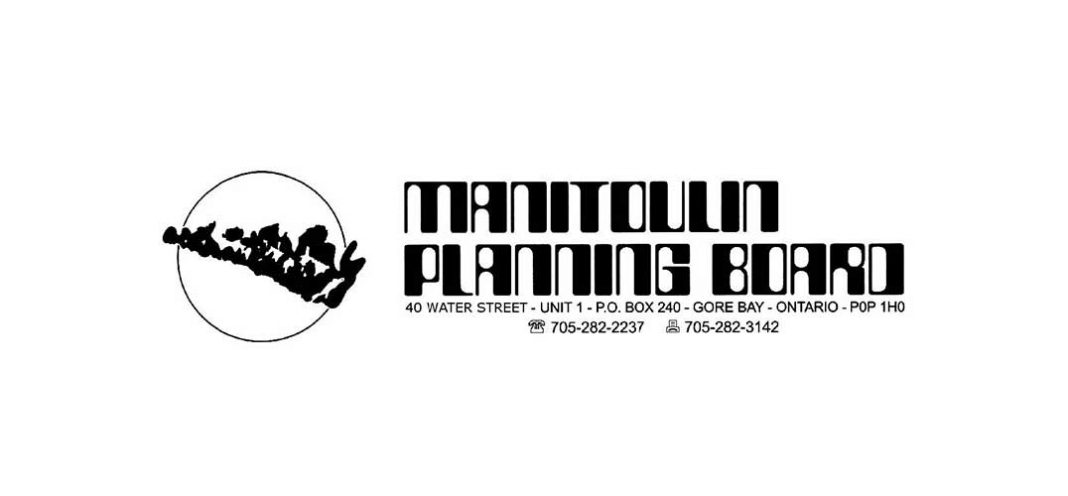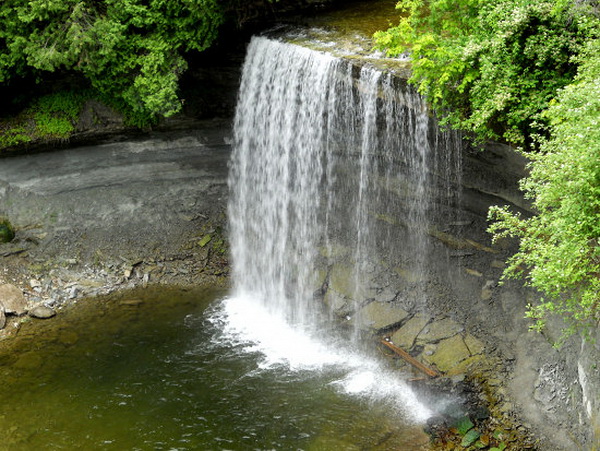MINDEMOYA – The Manitoulin Planning Board has begun the process of completing an area-wide Natural Heritage System (NHS) and is encouraging submissions from members of the public and groups on this process.
“I would like to welcome everyone here tonight to our public information session on our preparation of a natural heritage system for the Manitoulin planning area,” said Jake Diebolt, GIS technician of the MPB at the recent meeting. While there were a few members of the MPB board on hand there was only one member of the public in attendance.
The format of the information session included a number of display boards with draft mapping to assist in informing the public of what is involved in the creation of an NHS, Mr. Diebolt’s presentation and a question and answer session.
The meeting was informed that due to the unusually long time period taken for the development and approval of the Manitoulin Official Plan (OP) the Provincial Policy Statement (PPS) 2014 came into effect when the draft OP was nearly complete. It was agreed upon between the Ministry of Municipal Affairs and Housing (MMAH) staff and the MPB that provisions would be made for the planning board to designate a Natural Heritage and Open Space System (NHOSS) after the approval of the draft OP, rather than attempting to implement it and further delaying completion of the document. The plan is to be complete by October 29, 2022.
“The province defines a Natural Heritage System as a system made up of natural heritage features and areas, and linkages intended to provide connectivity, at the regional or site level, and support natural processes which are necessary to maintain biological and geological diversity, natural functions, viable populations of Indigenous species, and ecosystems,” said Mr. Diebolt. “These systems can include natural heritage features and areas, federal and provincial parks and conservation reserves, other natural heritage features, lands that have been restored or have the potential to be restored to a natural state, areas that support hydrologic functions, and working landscapes that enable ecological functions to continue. The province has a recommended approach for identifying natural heritage systems, but municipal approaches that achieve or exceed the same objective may also be used.”
“What this all means, it’s a network of core areas that link up important habitat, so they can be protected,” said Mr. Diebolt. “Core areas are large areas of good habitat and linkages are in between these corridors such as natural streams and strips of forest.” Endangered species habitat can be included in a core area, he said, noting that enough space is required between core areas and linkages that they don’t get fragmented or damaged by development.
They can include wetlands or a cold water stream for example, with waterfowl, birds, deer, etc. and the dense conifer to protect deer in the winter. If a stream is damaged by development for example, the core areas wouldn’t function as well, the meeting was told. The core areas do not all have the same habitat.
“What goes into designing a NHS is administration boundaries, and for instance co-operation between jurisdictions; we have to co-ordinate with others in the planning area,” said Mr. Diebolt.
The requirement for a NHS has been carried out in southern Ontario, but not in Northern Ontario previously, explained Mr. Diebolt. “There are benefits to this to protect natural heritage in a more holistic approach, he said. “The challenge we are facing is that no one in Northern Ontario has done this type of system previously, and those that have been carried out in southern Ontario do not have similar patterns as Manitoulin Island.”
Mr. Diebolt pointed out the MPB is seeking advice from provincial ministries and getting as much advice as possible through the process. “Right now we are at the stage of initial public consultation. We will gather information from provincial ministries, municipalities, First Nations and the general public. What we would like to do is similar to the (OP) in having a citizen advisory committee set up to provide advice to us, made up of representatives across all sectors on Manitoulin. And we will be having more open houses and public meetings.”
Stage two will include diagramming and putting together a terms of reference to identify goals and mapping. The mapping will then be sent to the ministries for approval.
“Hopefully we will get our feet under us and get a lot done by the end of this year, and finish everything before October 2022,” said Mr. Diebolt.
Richard Stephens, MPB board chair asked what municipalities can provide to the process.
Mr. Diebolt explained municipalities and First Nations can provide background information and data gathered. “Local knowledge is important. Any support municipalities, First Nations and the like can give us is welcome.”
“Can we carry out this plan all in house?” asked Ken Noland.
Mr. Diebolt said that he and Theresa Carlisle (MPB secretary) will try to do as much as they can in house. He acknowledged, “consultants are expensive. We did get some funding from the province for this process.” He said the MPB staff would like to have a consultant review what they have once everythings in place. “If we get to the point we are out of our depth we will have to look at consultants. But we will try to do as much as possible in house.”
Mr. Noland asked what effect Mr. Diebolt thinks the NHS will have on development. “I think it’s going to have an impact but I don’t think it will have a massive impact. A lot of the core area designations are already protected for those features; there are many limitations in there already” said Mr. Diebolt. He also pointed out a lot of the development on Manitoulin is low density as well.
Unlike the OP process, Mr. Diebolt said that he doesn’t feel the NHS will be as sheltered and any changes proposed to the plan by the province, the MPB will possibly be able to appeal. He encouraged public involvement in the process. “There is no replacement for local knowledge.”





